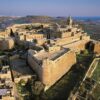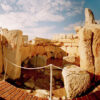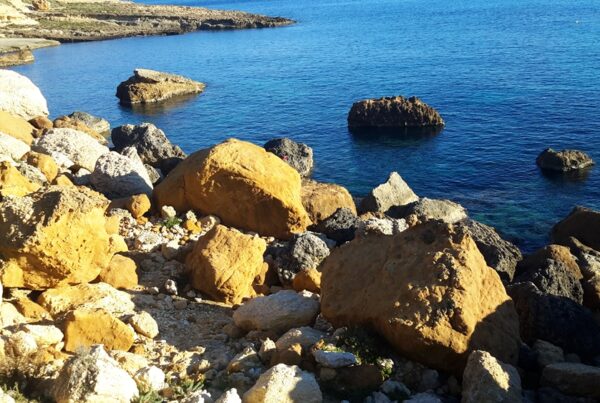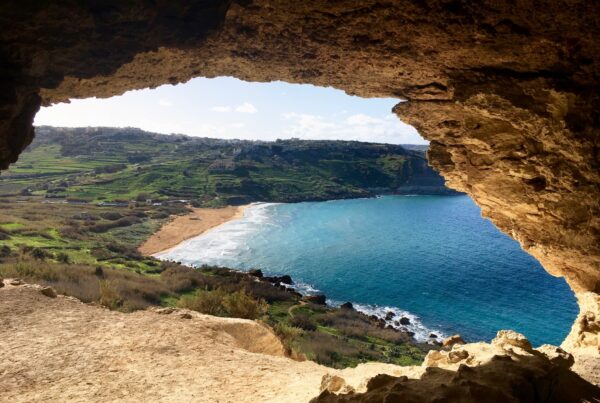
The Ggantija Temples are located in the small village of Xaghra, about 2 miles (3.2 km) northeast of Victoria. The temples comprise one of the most significant archaeological sites in Malta and also in the Mediterranean.
Built before the famous standing stones at Stonehenge, the two temples making up this remarkable UNESCO World Heritage site have an extraordinary history. Built between 3600 and 3200 B.C, they fell into disuse around 2500BC and were not fully revealed to the modern eye until the nineteenth century.
The name Ġgantija derives from the word ‘ġgant’, Maltese for giant, as Gozitans used to believe the temples were built by a race of giants. Not so surprising when you see the size of the limestone blocks from which it is constructed. Some of these megaliths exceed five metres in length and weigh over fifty tons.
The society responsible for the construction of both temples is often referred to as the ‘temple builders.’ Little is known about these people, other than they most likely came from modern-day Sicily and lived peacefully as hunter-gatherers. Another puzzling fact is that their society somehow disappeared. That is, historians cannot figure out how they vanished from the Maltese islands entirely.
Hard-wearing coralline limestone is used for the construction of the outer walls (which is one of the reasons the buildings have survived so long) whilst softer, smoother, Globigerina limestone is reserved for inner furnishings such as doorways, altars, and decorative slabs. Each temple consists of a number of apses flanking a central corridor. There is evidence that internal walls would have been plastered and painted. Two plaster fragments marked with red ochre have been found and are now preserved at the Gozo Museum of Archaeology.
Excavations have produced clues about these colossal temples. Ritual rooms, curved walls, spiral-shape carvings, niches with altars, libation holes and animal bones provide us only with educated guesses about the original purpose of the temples. They were most likely used in the worship of a fertility goddess or Earth Mother, but beyond that there is not much to assume. It is likely that religious ceremonies would take place within the structure while a congregation of people stood outside in the large, raised forecourt in front of the temples. The altars in the larger of the two temples have become an iconic image for Gozo, and can be found on postcards throughout the island. Each altar is constructed out of vertical stone slabs. Also in the larger temple, is a stone hearth that suggests fire was an important component of temple rituals.
The reality about the Ggantija Temples is that nobody alive can know the complete truth about them. They remain a compelling testament to early human civilization and will continue to evoke a sense of mystery in all who visit them.
A small number of statuettes and other prehistoric objects found at Ġgantija can be seen in the Gozo Museum of Archaeology.
Accessible for persons with a disability.






















